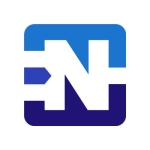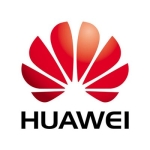I used FortiOS, the Fortinet firewall operating system, to connect two additional sites. I set up IPSec VPNs to connect all three sites. I also configured firewall rules to block certain countries and websites, such as gambling and social media sites like Facebook. Additionally, I implemented firewall rules to protect our web servers from XSS and SQL Injection attacks. Initially, I configured the VPN using IPsec, but when I couldn't find a suitable client for our workstations and desktops, I switched to SSL VPN. Fortinet provides dedicated FortiClient VPN software, which I used for this setup.
At the beginning of this month, we experienced DDoS and SQL injection attacks. The attack originated from a botnet and seemed to be associated with BroadNet. It was coming from a Fortinet device. I had to contact Spectrum to inform them about the botnet attack and provide them with the specific IP addresses to block. This action likely prevented us from being hacked and protected our web servers that were exposed to the public. This incident highlighted the usefulness of FortiOS's threat intelligence features.
The firewall options in FortiOS allow us to open up access to our vendors for EDI and all its features.
Fortinet could integrate something like a YubiKey for 2FA with their SSL VPN clients. Additionally, Fortinet could support WireGuard for our small office locations.
These small offices have two clients that log into our VPN from their workstations. Since all our sites use FortiGate, it would be great if I could set up WireGuard on the Fortinet device. Instead of using IPSec, having WireGuard support for site-to-site VPNs would be wonderful.
I have been using Fortinet FortiOS since February this year.
They handle the support because it's their device. We don't own it; we lease it from Spectrum. So, I can't speak to that for now. However, when we used to own the FortiGate, every time I called Fortinet for support, I would rate their response time at eight out of ten and their problem-solving ability at nine out of ten.
Once they respond, because it takes me a while to navigate the bureaucracy, I call the 800 number. They ask for various information, tokens, and other details. After I explain the problem, they call me back again. Usually, they assign the issue to an engineer, which also takes time. The engineer then calls me and solves the problem. So, I have to deal with a lot of bureaucracy.
We had a really old FortiGate there, and when we switched to the newer FortiGate, it was cheaper than the old one.
When we purchase a FortiGate, it comes with FortiOS. Overall, the pricing for the device and related components is better than average. In comparison, FortiGate offers more competitive pricing than Palo Alto and Cisco.
If they could log in, it would be possible only if FortiOS is included. With FortiOS, you can manage all your devices. Let's say you have ten devices and need to manage all of them, including patching FortiOS. FortiCloud helps you with that, and it's nice to have FortiCloud as a bundle with FortiOS. Even if you only have one device, I would still recommend it.
I suggest incorporating AI or machine learning to anticipate threats in the future. For instance, if you configure a new site with your FortiGate, AI could detect any misconfigurations. It would be beneficial for FortiOS, FortiGate, or Fortinet to have an AI feature that alerts you to potential misconfigurations in devices, like an edge router, communicating with others. This AI could also analyze your logs to identify patterns, such as frequent false positives, and recommend reconfiguring the device to minimize unnecessary alerts.
It's good. In my case, I was the only one dealing with the devices at that time. I would get all kinds of false positives and alerts. Sometimes, if there's a new device, the configuration from the old device to the new device doesn't translate. Maybe on the old device, everything defaults to open, and you must close everything. On the new device, everything might be defaulted to closed, and you have to open up the required ports. So, something like that would be nice, where it's easier to configure and find out if you did something wrong.
Overall, I rate the solution an eight-point five to nine out of ten.

















